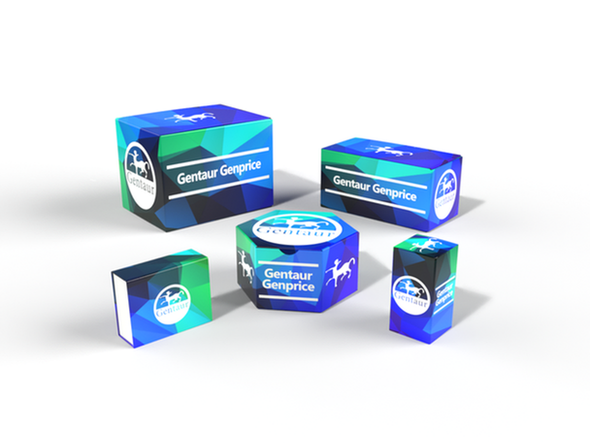Description
PPT1 Antibody | 61-421 | Gentaur UK, US & Europe Distribution
Host: Rabbit
Reactivity: Human
Homology: Predicted species reactivity based on immunogen sequence: Monkey
Immunogen: This PPT1 antibody is generated from rabbits immunized with a KLH conjugated synthetic peptide between 269-300 amino acids from the C-terminal region of human PPT1.
Research Area: Obesity, Signal Transduction
Tested Application: WB, IHC-P
Application: For WB starting dilution is: 1:1000
For IHC-P starting dilution is: 1:50~100
Specificiy: N/A
Positive Control 1: N/A
Positive Control 2: N/A
Positive Control 3: N/A
Positive Control 4: N/A
Positive Control 5: N/A
Positive Control 6: N/A
Molecular Weight: 34 kDa
Validation: N/A
Isoform: N/A
Purification: This antibody is prepared by Saturated Ammonium Sulfate (SAS) precipitation followed by dialysis
Clonality: Polyclonal
Clone: N/A
Isotype: Rabbit Ig
Conjugate: Unconjugated
Physical State: Liquid
Buffer: Supplied in PBS with 0.09% (W/V) sodium azide.
Concentration: batch dependent
Storage Condition: Store at 4˚C for three months and -20˚C, stable for up to one year. As with all antibodies care should be taken to avoid repeated freeze thaw cycles. Antibodies should not be exposed to prolonged high temperatures.
Alternate Name: Palmitoyl-protein thioesterase 1, PPT-1, Palmitoyl-protein hydrolase 1, PPT1, PPT
User Note: Optimal dilutions for each application to be determined by the researcher.
BACKGROUND: Palmitoyl-protein thioesterase-1 (PPT1) is a lysosomal hydrolase that removes long-chain fatty acyl groups from modified cysteine residues in proteins. Mutations in PPT1 have been found to cause the infantile form of neuronal ceroid lipofuscinosis (INCL) , and an animal model has been developed.1 The deduced PPT2 protein contains 302 amino acids, including a 27-amino acid leader peptide, a sequence motif characteristic of many thioesterases and lipases, and 5 potential N-linked glycosylation sites.2 PPT2 shares 18% amino acid identity with PPT1. Northern blot analysis detected a predominant 2.0-kb PPT2 transcript in the human tissues examined, with the highest expression in skeletal muscle; variable amounts of 2.8- and 7.0-kb transcripts were also observed. Recombinant PPT2, like PPT1, possesses thioesterase activity and localizes to the lysosome. Since PPT2 could not substitute for PPT1 in correcting the metabolic defect in INCL cells and was unable to remove palmitate groups from palmitoylated proteins that are routinely used as substrates for PPT1it has been postulated that PPT2 possesses a different substrate specificity than PPT1.






